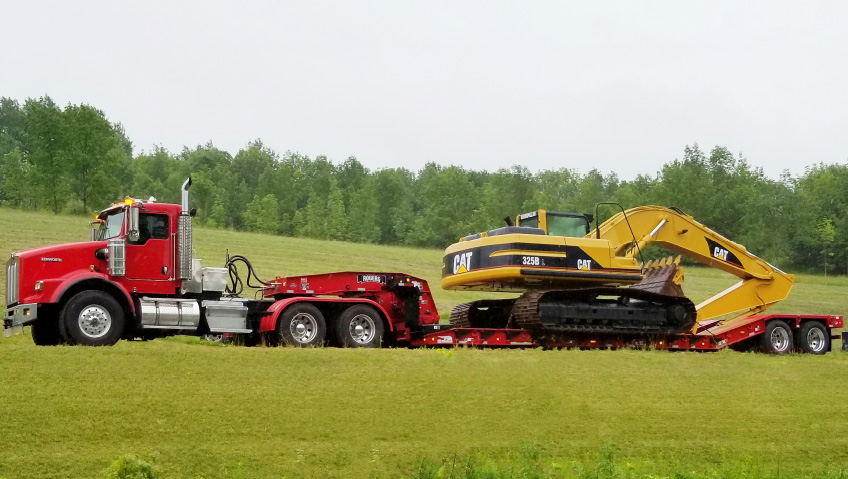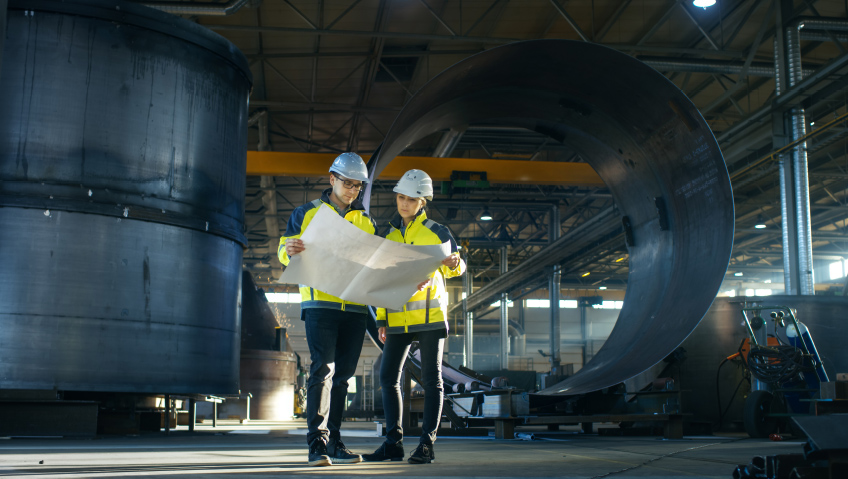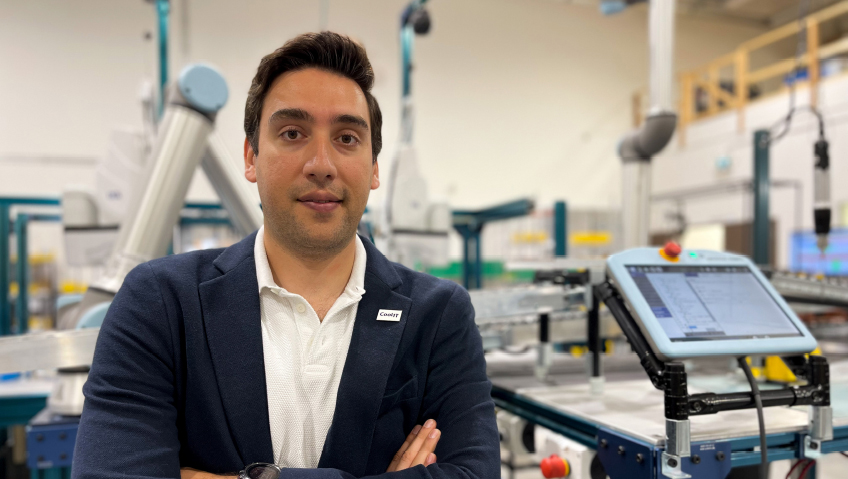As North America’s largest hydraulic press manufacturer, Macrodyne Technologies Inc. has its sights set on making a global name for itself.
While there are countless press manufacturers in the market, in North America and abroad, Macrodyne’s size and wide range of specialties set it apart. Its core faculties are impressive and include forming and extrusion, as well as niche moulding capabilities such as compression moulding, forging, stretch forming, and superplastic forming in addition to complete automation solutions. Built upon a legacy of engineering that spans more than three decades, the company continues to innovate and modernize a tried-and-true technology in new and exciting ways.
Macrodyne’s presses, press lines, and die-handling equipment serve customers and OEMs in complex industries like automotive, aviation, oil and gas, and pulp and paper. Its team of experts can engineer a solution to meet a customer’s needs and offer exceptional service and support long after the sale is complete.
Teaming up
The company’s dedication to customer service met great challenges during the pandemic travel restrictions, particularly in guaranteeing the exceptional level of service that their international accounts had come to expect. Macrodyne developed a suitable new approach for the times of building strategic relationships in key markets.
“We spend a lot of time finding partners, either individual contractors or companies, that we can work with to maintain that level of service and it’s worked well for us,” says President and CEO Kevin Fernandes.
Collectively, the team rose to the occasion, staying safe while delivering projects. And by ensuring it had plenty of components and stock on hand, the company could mitigate the impact of supply chain shortages and continue delivering orders as promised.
As Fernandes notes, “It’s not a low-cost solution to the problem, but in terms of the ability to scale, and in terms of the ability to keep service with the customer, that approach has worked perfectly for us.”
Model for success
By leveraging strategic relationships, staying attuned to ever-evolving market conditions and remaining innovative, Macrodyne is redefining what is possible to drive growth in both revenue and projects to assert its reputation globally.
Fernandes and his team were aware that to break into the European market and compete locally, they needed a presence of their own. So, to get things moving they pursued a strategy of acquisition rather than establishing their own facility, which is costly, time-consuming, and presents a formidable staffing challenge in these constricted labour markets.
“Our biggest problem with the European market,” Fernando says, “is that there was no presence, so anytime we tried to make headway there they would just tell us ‘That’s all great, but if you don’t have an office and service here, if you don’t have local support, we’ll just go with one of the other dozen press manufacturers that are already in our backyard,’ which, to be fair to them, makes a lot of sense.”
Macrodyne responded by delivering on all of those things and more.
Macrodyne acquired German press manufacturer Dunkes, a company that has been in operation since 1960 and brings decades of experience in pneumatic assembly and riveting presses. These competencies will round out Macrodyne’s portfolio nicely.
As an example, the Macrodyne hydraulic straightening press manufactured by Dunkes is the ticket to boost efficiency, precision, and productivity in manufacturing processes regardless of the shape of the material (round, flat, et cetera). Access to this technology or the European market would not have been possible without this acquisition.
And, while the details are yet to be released, there are other acquisitions in the works in Europe and the United States, the latter of which will position Macrodyne to take advantage of the emergent Build America sentiment in a market it has long served.
Bigger capabilities, bigger projects
With the capacity to undertake projects of up to 30,000 tons across applications and sectors, Fernandes refers to the last year as “an inflection point for Macrodyne,” as it has completed larger and more exciting projects than ever before.
“Broadly speaking, we’ve been building presses in the two-, three-, four-thousand-ton range when we’re talking about big presses, but if we look at this last year, we delivered an eight-thousand-ton steel straightening press, our first,” he explains.
While smaller than the 11,000-ton press Macrodyne previously delivered, this was the largest in terms of sheer size and weight. There is also an order underway for four 10,000-ton presses with full automation, which will be supported by its new automation office in Kingston, Ontario.
At Macrodyne, it is not just about the size of the projects and the range of its capabilities, it is the speed of delivery that’s important. A 3,500-ton press was expedited in six months at the height of the pandemic and a 2,500-ton press in only seven months, manufacturing feats that would have taken most manufacturers a year or more to complete.
“The number of projects we do per year has been relatively stable but the revenue per project has grown substantially, so we’re now taking on projects that have a larger scope and increased revenue, and also projects that are much larger. Instead of 100-ton presses, we’re doing 10,000-ton presses,” explains Fernandes.
Larger projects mean larger revenue and the need for larger manufacturing capacity. To support the growth in project size, Macrodyne has also grown organically by investing in its local manufacturing footprint. Last year, its presence in Concord, Ontario grew from 32,000 square feet to just under 100,000 square feet to accommodate even the largest projects.
Levelling up technology
Further to growing its physical footprint, Macrodyne is growing its capabilities and in this regard, partnership is an important part of its success. This year, the manufacturer signed a global licensing agreement with AEM Power Systems to develop gas-oscillation superplastic-forming technology, a move that could render conventional superplastic forming obsolete.
According to Fernandes, prototype testing is underway and once commercialized, “We could potentially be able to do superplastic forming up to twenty times faster, create shapes that were never feasible before, and reduce tool wear.”
In an industry where advancements are typically fractional, this will be revolutionary.
Fernandes compares it to typical die clamping-process improvements that could take a part of the process from ten to five minutes. Where this advancement represents five percent of the overall cycle time, gas-oscillation superplastic forming will deliver savings of upwards of 95 percent total cycle time.
“There’s not a lot of proprietary technology left in this industry but in this case, it really would be truly proprietary technology,” says Fernandes. “We always want to keep our options open.” For the company, keeping its options open includes identifying new ways to innovate, grow, and offer greater value to its existing and prospective customers long into the future.
“Long-term we will continue to develop new technologies or push the envelope on the technologies we’re currently working with. That can specifically be new technologies, but more generally, larger-sized presses that exploit the technologies we’ve already developed. Or it can be full turnkey cells and automation—things we’ve done before that we’ve just been involved in on the surface, but now we want to be the ones,” Fernandes says.
As both a press manufacturer and an innovator, Macrodyne has become a force to be reckoned with. Proud of how far the company has come, Fernandes is looking to replicate this success in new markets wherever it makes sense to do so—across industries, sectors, and borders alike, making an impact wherever Macrodyne goes.






